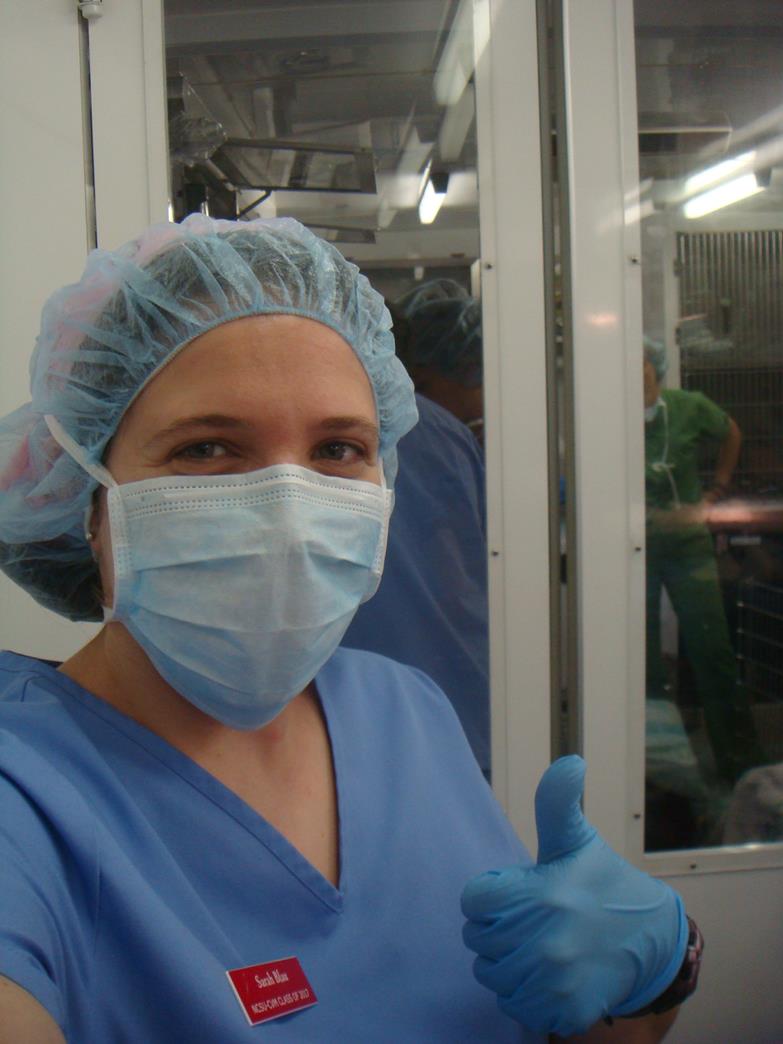Mobile Surgery Unit and Feral Cats Provide Rare Experience for First-Year Veterinary Student

NC State University’s College of Veterinary Medicine (CVM) has an academic calendar that allows students two weeks of hands-on experiences called “selectives” at the end of each semester. The following is a reflection on my first week of selectives.
Relishing a post-finals, post-Thanksgiving euphoria, I was greatly looking forward to my first selective week when December rolled around. Having zero experience working with cats, I had registered for a feral cat spay/neuter clinic in the hopes of gaining both veterinary technician and cat handling experience. The CVM’s mobile surgery unit was travelling to Hatteras Island, part of the North Carolina Outer Banks. The goal of the trip was to reduce the expansion of a feral cat population on the island by spaying/neutering captured cats and then releasing them back to their colonies.
Feral cats can be found across the U.S., including in North Carolina—from the Raleigh business park down the street, to the backyards of rural residential communities, such as those on Hatteras Island. Feral cats are wild, unsocialized cats descended from lost or unwanted house pets. Their colonies grow quickly and can have severely negative impacts on the environment such as killing native wildlife. Additionally, feral cats are potential carriers of diseases, like rabies, that can easily spread to humans or to pet cats. Two common management programs for reducing feral cat populations are catch-neuter-release (CNR), and catch-euthanize. There is much debate about CNR versus catch-euthanize programs. Studies have shown that catch-euthanize programs can be more efficient and cost-effective, but CNR programs are generally viewed as more humane.
On Hatteras, feral cats are a part of the community. Many residents feed the cats daily, and some even provide shelter. These “caretakers” are passionate about their cats’ welfare, and would refuse to see the cats removed or euthanized. CNR programs allow for a more agreeable way to minimize the growth of feral cat colonies in places like this, where the well-being of feral cats is a community priority. While CNR methods don’t have immediate effects on cat populations, it is likely that in an isolated location like Hatteras Island, colony numbers will decrease over time, especially with repeated visits from the CVM mobile surgery unit.

During three work-intensive days, our student crew, under the guidance of Dr. Kelli Ferris, spayed/neutered more than 80 feral cats brought to us by caretakers through the local non-profit Friends of Felines. Each cat also received a microchip for easy monitoring, vaccines, and an ear-clip to identify that they had been through the clinic.
In addition to the amazing sense of accomplishment in treating so many cats and the overwhelming gratitude of the Friends of Felines gang, I also gained an education I don’t think could have been acquired anywhere else in such a short amount of time. I learned how to safely handle feral cats, sedate them, give vaccines, prep cats for surgery, and use proper sterile techniques while assisting the third-year students performing spay surgeries. I even got to neuter two cats—a rare experience for a mere first-year student!
Just as inspiring as my own experience was watching the third-years become more comfortable with spay and neuter surgeries. By the middle of third year, most CVM students have only performed a single cat spay and a single cat neuter. In only three days on Hatteras, these students more than quintupled their cat surgery experience, and it was evident in the speed and confidence they seemed to gain with every surgery.
On a more personal level, this experience was like bounding over three gigantic hurdles. Having entered into this selective with zero cat experience, a cat allergy, and a fear that I would get sick and pass out watching a surgery, let alone performing one, I came away from the week filled with newfound confidence. I am now slightly more comfortable with cats, I know my allergy won’t interfere with my job, and I can handle surgeries without vasovagal complaint. Three giant obstacles that had loomed before me and I knocked them down with ease thanks to this amazing experience. Amongst all the other things I gained working with feral cats on Hatteras Island, the most remarkable is a confirmation that I have chosen the right career path, the path of a veterinarian.
Sarah Blau, a member of the Class of 2017 at NC State University’s College of Veterinary Medicine, is sharing some of what she learns and experiences as a first-year veterinary student with readers of the CVM News Central Blog. Watch for these postings on a monthly basis.


